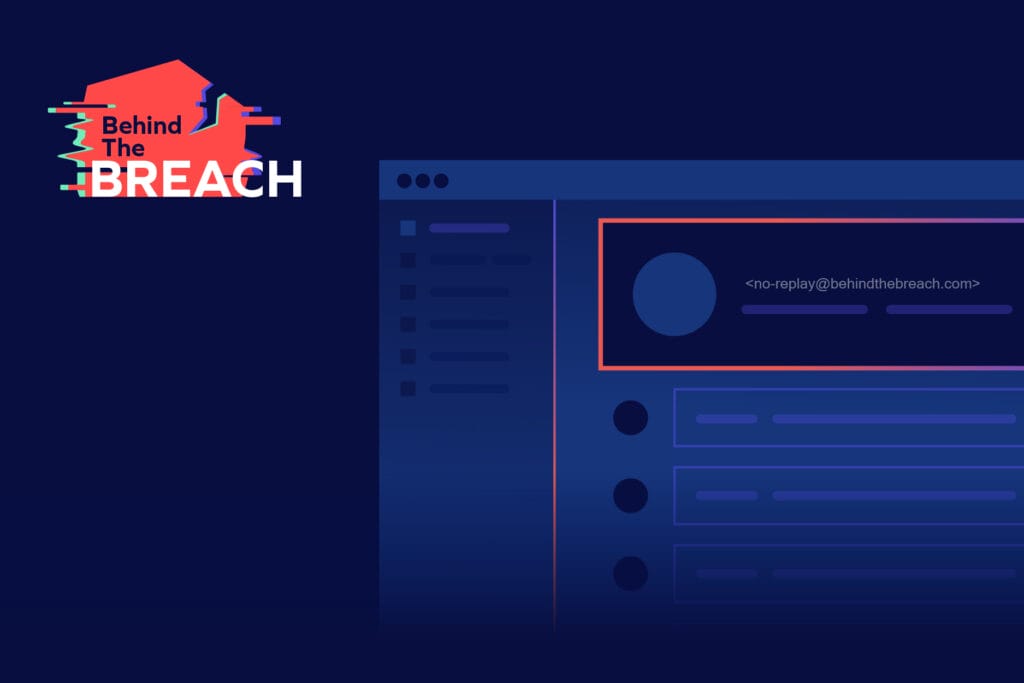How do you create strong, valuable, and lasting vendor partnerships? Vendor onboarding sets the tone for your vendor relationships and helps get your suppliers set up to begin working with your business. This blog digs into the onboarding process and strategies you can use to improve security, streamline processes, and support your vendors.
What Is Vendor or Supplier Onboarding?
Vendor or supplier onboarding is how a B2B company integrates new vendors or suppliers into its business operations. This process should involve collecting and verifying essential information from your vendors, such as legal documentation, financial records, and compliance certifications, to ensure they meet the company’s standards and requirements. Vendor onboarding also includes establishing contractual agreements, setting up payment terms, and configuring communication channels to facilitate seamless collaboration. Part of your vendor or supplier onboarding process should include setting up the billing and payment process.
Why Is Vendor Onboarding Critical for Secure B2B Payments?
The vendor setup process is the first building block for vendor relationships. By systematically vetting and onboarding vendors, you can mitigate risks associated with unreliable suppliers, poor product quality, or non-compliance with regulatory standards. Your onboarding process should ensure transparency, accountability, and alignment of expectations.
A secure and automated vendor onboarding process for B2B payment processing allows you to validate sensitive data without the typical vulnerabilities that come with manual approval. Trustmi’s vendor onboarding offering allows businesses to provide a personalized, self-service vendor portal to help streamline their processes and avoid errors or fraud. Before sending payments, it’s crucial to know that your vendors are using verified bank accounts with real-time sanction validations to safeguard operations.
What is the Typical Vendor Onboarding Process?
Once you have a potential vendor in mind, there are several steps you will need to take for the onboarding process. The typical stages of vendor onboarding go from the initial application to approval, payment, and assessment with a structure that might look something like this:
- Application and documentation of essential vendor information (such as company details, contact information, tax identification number, banking information, etc.).
- Vendor evaluation to conduct due diligence by checking the vendor’s credentials, reputation, financial stability, and compliance with industry standards. This may involve background checks, reference checks, and review of past performance.
- Contract negotiation and agreement to terms, including pricing, payment terms, delivery schedules, and service level agreements (SLAs).
- System setup and integration of the vendor in internal systems, such as an enterprise resource planning (ERP) or accounting software, to facilitate communication, order processing, invoicing, and payment processing.
- Invoice submission for goods delivered or services rendered from the vendor according to the agreed-upon terms and conditions.
- Invoice verification and approval of the accuracy and completeness of the invoice against purchase orders, contracts, and delivery receipts to avoid invoice fraud or errors.
- Payment processing (either manually or through automated systems) to release payment to the vendor according to the agreed-upon payment terms. Payment methods may include ACH, wire, electronic funds transfer (EFT), checks, Paypal and digital wallets, and more.
- Reconciliation and record-keeping of all financial transactions for audit and compliance purposes. Any discrepancies or disputes are promptly resolved through communication with the vendor.
7 Strategies for Efficient Vendor Onboarding
Your onboarding process should reduce administrative burdens for your team and establish productive partnerships with your vendors. Here are seven strategies you can use to create a robust and streamlined onboarding experience for your suppliers and vendors.
#1 Digitize Your Vendor Onboarding Processes
Utilize secure online portals or digital platforms to streamline the vendor application and onboarding process, allowing vendors to submit documentation, sign contracts, and provide necessary information electronically into a trusted system. Make sure to use an onboarding portal that can easily integrate with your vendor onboarding processes with existing enterprise resource planning (ERP) systems or accounting software to automate data entry, synchronization, and reporting, reducing manual tasks and improving data accuracy.
#2 Automate Document Verification Processes
Implement automated document verification systems or software solutions to streamline the validation of vendor information, such as tax identification numbers, bank accounts, legal documentation, and compliance certifications.
#3 Standardize Onboarding Procedures
Develop standardized onboarding procedures and checklists to ensure consistency and efficiency across all vendor onboarding processes. Clearly outline requirements, documentation, and timelines to expedite the onboarding process.
Provide training and support resources to vendors on the onboarding process, system usage, invoicing requirements, and payment procedures to ensure a smooth transition and minimize errors or delays.
#4 Provide Self-Service Tools
Offer secure self-service tools or portals for vendors to manage their profiles, update information, submit invoices, track payment statuses, and access relevant documents, reducing the need for manual intervention and communication.
#5 Establish Clear Communication Channels
Maintain open and clear communication channels with vendors throughout the onboarding process, addressing any questions, concerns, or issues promptly to prevent misunderstandings and delays. Vendor portals that support chat options for instant collaboration can be very useful for handling issues and clarifying any questions that come up.
#6 Conduct Regular Reviews and Audits
Periodically review and audit vendor onboarding processes to identify areas for improvement, address bottlenecks or inefficiencies, and ensure compliance with regulatory requirements and internal policies.
Continue to check all invoices and payments against the goods and services you receive to reduce the chance of errors or invoicing fraud.
#7 Foster Collaboration and Feedback
Your onboarding process should be in a state of continual improvement. Foster collaborative relationships with vendors by seeking feedback on the onboarding process, listening to their suggestions for improvement, and continuously refining onboarding procedures to enhance efficiency and satisfaction.
Best Practices for Your Vendor Onboarding Process
Choose a Secure Onboarding Process
The vendor onboarding process is cumbersome and requires the involvement of different departments within the organization as well as outside vendors, making it prone to human error, internal collusion, and cyberattacks. It is important to find a technology solution that can automate the manual work of all the parties involved and thereby eliminate vulnerabilities in the process that could result in mistakes or fraud.
Provide Clear Communication and Support
Your onboarding process is when you can set expectations and requirements for your vendors. A clear and straightforward vendor onboarding process helps foster trust and transparency, laying the foundation for a collaborative and mutually beneficial relationship. Proactively address vendor questions, concerns, and needs to demonstrate your commitment to the partnership.
Facilitating smoother onboarding experiences and cultivating long-term relationships starts with mutual respect and understanding.
Reduce Friction Where Possible
Your process should minimize delays, frustration, and potential errors wherever possible. It’s important to expedite the time to value for both parties in order to build a lasting relationship that is mutually beneficial. By streamlining procedures and providing intuitive tools, B2B companies can enhance vendor satisfaction, improve operational efficiency, and lay a solid foundation for productive partnerships from the outset.
How Can Your Vendor Onboarding Process Mitigate Vendor Fraud?
Reducing the likelihood of vendor fraud begins with implementing robust controls and measures within the onboarding process. Here are several steps to achieve this:
Conduct Thorough Due Diligence
Complete comprehensive background checks and due diligence on potential vendors, verifying their credentials, reputation, and financial stability to ensure legitimacy.
Documentation Verification
Require vendors to submit relevant documentation, such as W-9s, bank letters, business licenses, tax identification numbers, and compliance certifications, and verify their authenticity through reliable sources.
Clarify Contractual Agreements
Establish clear contractual agreements outlining payment terms, deliverables, and expectations, and ensure vendors understand and adhere to these terms.
Segregate Team Duties
Implement segregation of duties within the payment processing workflow to prevent collusion and unauthorized access. Assign separate individuals or teams to approve invoices, process payments, and reconcile accounts.
Review and Check Your Process
Conduct periodic audits and security reviews of vendor relationships, invoices, and financial transactions to monitor vendor access to internal tools and processes.
Leverage Technology and AI
Use fraud prevention technology that leverages AI to scan invoices and detect anomalies and suspicious signals in vendor data and behaviors. The best tools can also automate cumbersome manual processes, verify bank accounts and information, and enhance fraud detection throughout the vendor onboarding process.
Require Training and Awareness
Provide training to employees involved in the vendor onboarding and payment processes on recognizing common fraud schemes — such as fake invoices or phishing attempts — and the importance of vigilance and adherence to company policies.
Encourage Communication and Reporting
Establish clear communication channels and reporting mechanisms for employees to report any suspected fraudulent activities or irregularities promptly.
Streamline Vendor Onboarding and Reduce Vendor Fraud With Trustmi’s Advanced Technology
Do you have the tools you need to reduce the likelihood of vendor fraud and streamline your onboarding process?
Trustmi provides an advanced platform that specializes in enhancing vendor onboarding efficiency and security. Get access to robust identity verification, background checks, and compliance screening capabilities to ensure that only reputable and trustworthy vendors are onboarded into your network.
With Trustmi’s sophisticated fraud detection algorithms and real-time monitoring features, you can mitigate risks while simplifying the onboarding process for your suppliers and vendors.
Don’t leave your business vulnerable; enhance your vendor onboarding process and security measures with Trustmi today. Schedule a call with our team to find out how we can help protect your assets, uphold your reputation, and foster stronger vendor relationships.





